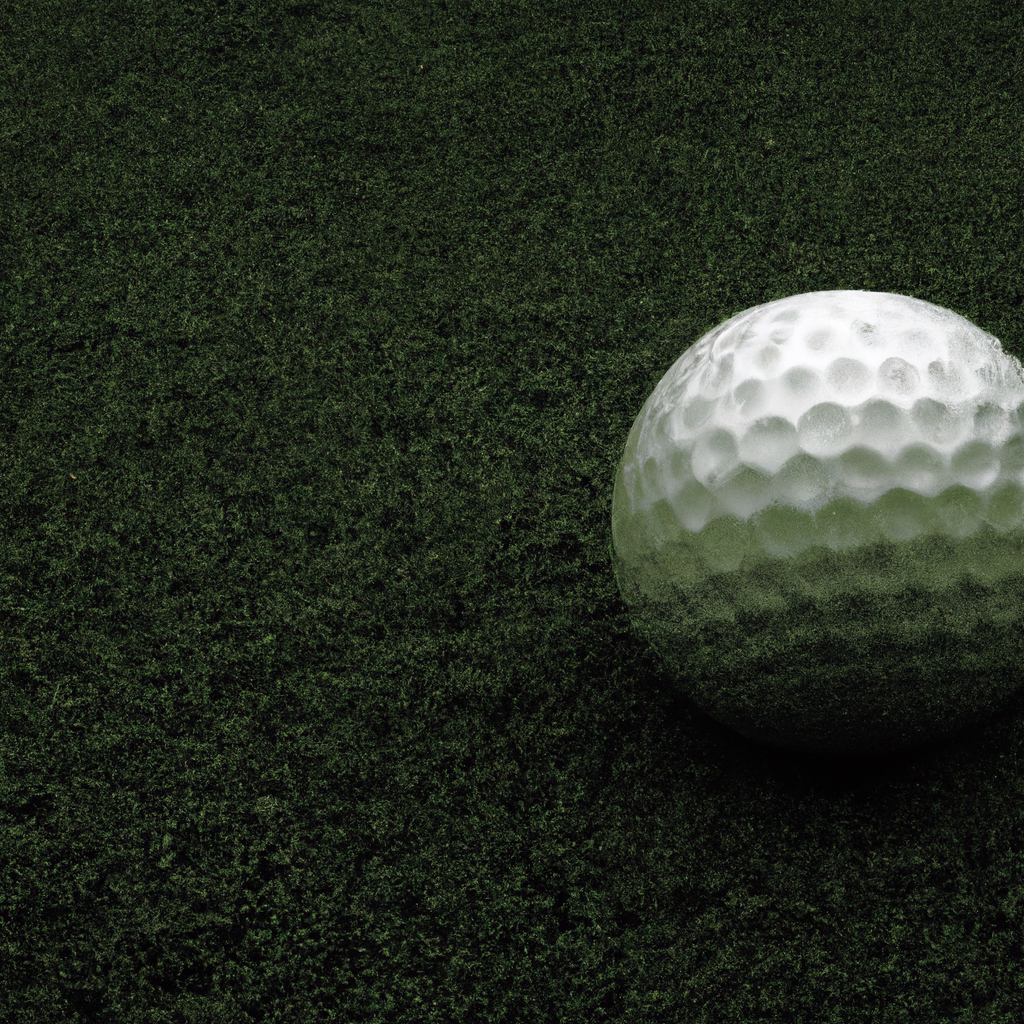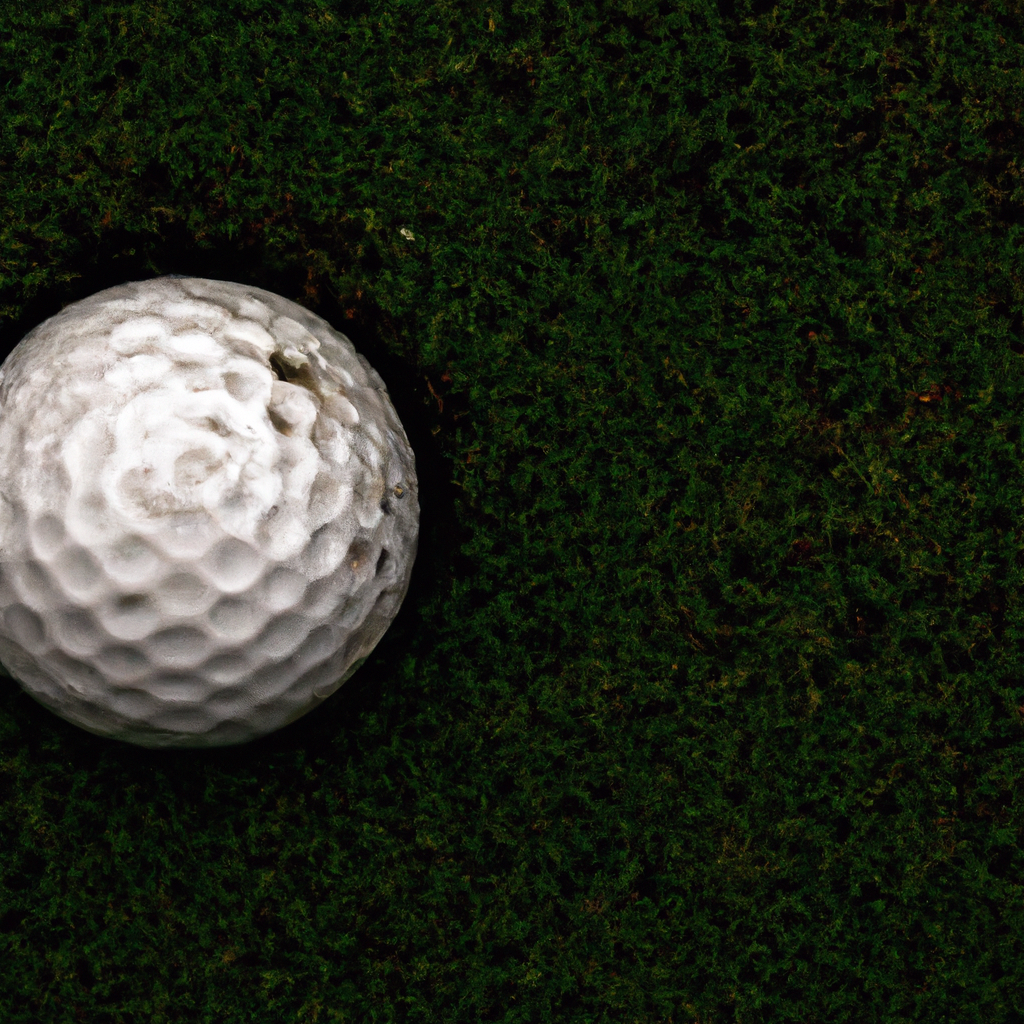We may earn money or products from the companies that may be mentioned in this post.
In the world of golf, the age-old question remains: does using old golf balls affect the distance you can achieve? As golfers, we all strive for that perfect swing, hoping to send our balls soaring through the air, but could using older, worn-out balls be hindering our chances at achieving greater distances? Join us as we explore the impact of using old golf balls on your game and discover just how much distance you may be losing in the process.

I. Introduction
A. Overview of the topic
Golf is a beloved sport that requires skill, precision, and technique. One crucial element in the game of golf is the golf ball. The quality and condition of the golf ball can greatly impact your performance on the course. In this article, we will explore the importance of the golf ball and its direct influence on the distance you achieve.
B. Importance of golf ball
The golf ball plays a pivotal role in determining the distance covered during a shot. It is not just a simple sphere; it is a carefully engineered piece of equipment that can significantly impact your game. The right golf ball can enhance your performance by maximizing distance and providing optimal control over your shots.
C. The impact of golf ball on distance
The golf ball, with its unique design and construction, directly influences how far it travels from the moment it leaves the clubface. Several factors, such as golf ball condition, core compression, dimples, cover material, and design, contribute to the overall distance the ball can achieve. Understanding these factors and their effects is crucial for any golfer aiming to improve their game.
II. Factors Affecting Golf Ball Distance
A. Golf ball condition
The condition of the golf ball plays a significant role in determining the distance it can cover. As a golf ball ages, it undergoes deterioration that affects its overall performance. Scratches, scuffs, and marks on the ball’s surface can create turbulence and hinder its aerodynamics, leading to decreased distance.
B. Core compression
The core compression of a golf ball refers to its firmness or softness. Different compression levels cater to players with varying swing speeds. In general, higher compression balls are suitable for high swing speeds, while lower compression balls provide better performance for slower swing speeds. Choosing the right core compression is vital for achieving maximum distance.
C. Dimples on the golf ball
The dimples on a golf ball are not purely aesthetic; they serve a crucial purpose. Dimples create turbulence in the air around the ball, reducing the drag forces acting upon it. This allows the ball to maintain stability and achieve greater distance. The number, depth, and pattern of the dimples all contribute to the ball’s aerodynamic properties.
D. Cover material
The cover material of a golf ball affects its trajectory and spin rates, both of which impact distance. Balancing the softness and durability of the cover material is essential. A softer cover can provide greater spin, but it may sacrifice durability. On the other hand, a harder cover may offer increased distance but less control around the greens.
E. Golf ball design
The overall design of a golf ball, including its size and weight distribution, plays a significant role in its performance. Modern golf balls are designed to maximize distance, control, and overall playability. Manufacturers incorporate advanced technology and engineering techniques to create golf balls that can optimize various aspects of the game.
III. Understanding Golf Ball Deterioration
A. The aging process of a golf ball
Over time, golf balls naturally age and deteriorate. Factors such as repeated impacts, exposure to sunlight, and moisture can contribute to this process. As golf balls age, their materials degrade, affecting their performance characteristics and overall distance potential.
B. Factors contributing to deterioration
Several external factors can accelerate the deterioration of golf balls. Storing them in extreme temperatures, exposing them to excessive humidity or direct sunlight, and neglecting proper maintenance can significantly impact their performance. It is crucial to understand and manage these factors to preserve the quality of your golf balls.
C. Identifying signs of a deteriorated golf ball
It is important to recognize when a golf ball has deteriorated to ensure optimal performance during your game. Signs of deterioration include visible wear and tear, loss of dimples, cracks, and an overall lack of responsiveness. Regularly inspecting your golf balls will help you identify when it is time to replace them.

IV. Impact of Using Old Golf Balls on Distance
A. Loss of compression
As golf balls age, their core compression tends to decrease. This loss of compression can result in reduced energy transfer from the clubface, leading to decreased distance. The lower the compression, the less elasticity the ball has, resulting in a lesser energy rebound effect and ultimately affecting the shot’s overall distance.
B. Reduced energy transfer
Old golf balls may have a lower coefficient of restitution (COR) due to compression loss and material degradation. COR refers to the measure of the ball’s ability to return its stored energy upon impact with the clubface. Reduced energy transfer can significantly impact the ball’s velocity and distance achieved.
C. Decreased initial velocity
With age, a golf ball’s initial velocity tends to decrease. It is the initial velocity that determines the speed at which the ball leaves the clubface. As the velocity decreases, the ball covers less distance, resulting in shorter shots and decreased overall performance.
D. Altered launch angle and spin
Older golf balls may experience alterations in their launch angle and spin rates. These changes can affect the ball’s trajectory, adding unpredictability and reducing overall distance. The altered launch angle and spin may cause shots to have a higher or lower flight path, impacting their distance and accuracy.
E. Effects on ball flight and carry distance
Using old golf balls can have a noticeable effect on the ball’s flight characteristics and carry distance. Shots may tend to balloon or drop prematurely, leading to decreased carry distance and potential accuracy issues. Maintaining optimal ball flight and carry distance is crucial for achieving success on the golf course.
V. Experimental Studies
A. Study 1: Comparison between new and old golf balls
In a study comparing new and old golf balls, researchers analyzed the performance differences between the two. The study found that new golf balls consistently outperformed old ones in terms of distance, spin rates, and accuracy. These findings highlight the importance of using new golf balls for optimal performance.
B. Study 2: Influence of golf ball age on distance
Another study examined the influence of golf ball age on distance achieved. The researchers found a clear correlation between ball age and decreased distance. As the balls aged, their distance potential decreased, emphasizing the significance of using fresh golf balls to maximize distance.
C. Study 3: Impact of storage conditions on golf ball performance
A study focused on exploring the impact of storage conditions on golf ball performance. The researchers discovered that storing golf balls in extreme temperatures, high humidity, or direct sunlight led to accelerated deterioration and a decrease in performance. Proper storage conditions are essential for maintaining optimal golf ball performance.
VI. Expert Opinions
A. Insights from professional golfers
Professional golfers, who rely heavily on the performance of their golf balls, acknowledge the impact of using old balls on distance. They emphasize the importance of playing with fresh, high-quality golf balls to achieve maximum performance and distance. Maintaining a consistent supply of new golf balls is a priority for professional golfers.
B. Golf ball manufacturer perspectives
Golf ball manufacturers have invested significant resources in research and development to enhance distance performance. They consistently emphasize the importance of using new golf balls to optimize distance and overall playability. Manufacturers recommend replacing golf balls regularly, especially if they show signs of wear or damage.
VII. Golf Ball Maintenance and Shelf Life
A. Proper care for maintaining golf ball performance
Proper care and maintenance of golf balls are vital for maximizing their performance and longevity. Cleaning golf balls after each round, storing them at room temperature, and avoiding prolonged exposure to extreme conditions are crucial steps in preserving their quality and optimizing distance.
B. Shelf life of a golf ball
While golf balls do not have an expiration date, they do have a shelf life. Manufacturers suggest that golf balls can generally maintain optimal performance for up to five years from the date of manufacture. However, it is essential to regularly inspect and replace golf balls that show signs of deterioration.
C. When to replace golf balls
As a general rule, it is recommended to replace golf balls after every three to five rounds of play or when visible wear, cracks, or deformities become apparent. To ensure consistent distance and optimal performance, regularly evaluating the condition of your golf balls is key.
VIII. Strategies for Maximizing Distance
A. Choose the right golf ball
Selecting the right golf ball for your swing speed, playing style, and course conditions can have a significant impact on distance. Consult with professionals or utilize resources provided by golf ball manufacturers to determine the most suitable ball for your needs.
B. Perform frequent ball checks
Regularly inspect your golf balls for signs of wear, damage, or performance decline. This includes checking for lost compression, visible scratches, or reduced responsiveness. Identifying deteriorated golf balls allows for timely replacements and ensures distance optimization.
C. Store golf balls properly
Proper storage conditions are critical for preserving golf ball performance. Store them at room temperature, away from extreme heat or cold. Additionally, keep them in a clean, dry place to avoid exposure to moisture. Properly stored golf balls will maintain their intended characteristics and maximize distance potential.
D. Follow maintenance guidelines
Follow maintenance guidelines provided by golf ball manufacturers to extend the lifespan and optimize distance. Clean your golf balls thoroughly, both during play and after each round. Avoid using abrasive cleaners or excessive force when cleaning to prevent damage to the ball’s surface.
IX. Conclusion
A. Summary of key findings
Using old golf balls can have a significant impact on the distance you achieve on the golf course. As golf balls age and deteriorate, their performance characteristics change, resulting in decreased compression, energy transfer, initial velocity, and altered launch angle and spin. Experimental studies and expert opinions reinforce the importance of using new golf balls for optimal distance and overall game performance.
B. Importance of using new golf balls
By understanding the factors affecting golf ball distance, the aging process of golf balls, and the impact of using old golf balls, it becomes evident that using new balls is crucial for maximizing distance. Fresh golf balls offer improved compression, energy transfer, initial velocity, and trajectory consistency, all of which contribute to enhanced distance potential.
C. Tips for optimizing golf ball distance
To optimize golf ball distance, choose the right golf ball for your swing speed and playing style. Perform frequent ball checks to identify deteriorated balls and replace them timely. Store golf balls properly by maintaining suitable storage conditions. Lastly, follow maintenance guidelines from manufacturers to ensure optimal performance and longevity.
By implementing these strategies and utilizing fresh, high-quality golf balls, you can significantly enhance your distance capabilities on the golf course and improve your overall game performance.
